10 Comfortable Breastfeeding Positions for You and Your Baby
23 hours of research 3 minute read

Welcoming a new little one into the family is an amazing experience, and when it's time to feed, finding the perfect position can make the moments even more special. Today, let's explore ten simple and cozy ways to hold your baby while breastfeeding. Each method brings its own unique benefits, making the experience enjoyable for both you and your baby. Whether you're a new mom or have been through this before, let's delve into these easy and comfortable breastfeeding positions that add a touch of warmth to your time together.
Breastfeeding Positions

1. Cradle Hold
The Cradle Hold is a classic and widely used position. In this pose, the baby's head rests in the crook of your arm while their body lies across your lap. This position promotes a close connection between you and your baby. It establishes an emotional connection through eye contact and skin-to-skin touch. For beginners, the Cradle Hold offers stability, making it easier for both mom and baby to get used to the breastfeeding routine.
Best for: Beginners who are still getting the hang of breastfeeding. It provides good support for the baby and allows eye contact, fostering emotional bonding.
2. Cross-Cradle Hold
Similar to the Cradle Hold, the Cross-Cradle Hold involves cradling the baby's head in one hand. However, in this position, you use the opposite hand to support your breast. This gives you more control over the baby's latch. It establishes an emotional connection through eye contact and skin-to-skin touch.
Best for: Mothers with smaller babies or those struggling with latching issues. It offers better visibility of the latch and allows you to guide the baby's mouth more easily.
3. Football Hold
The Football Hold is aptly named because it resembles holding a football. In this position, the baby is tucked under your arm on the same side as the breast you are feeding from. This is a great option for moms recovering from a C-section. It establishes an emotional connection through eye contact and skin-to-skin touch. For mothers who have had a C-section or twins, the Football Hold keeps pressure away from sensitive areas. It allows mothers to monitor the latch closely and ensures a clear line of sight, making it an ideal choice for those with specific medical needs or multiple infants.
Best for: Mothers who have had a C-section or twins. It keeps pressure away from the incision site and provides a clear view of the baby's latch.
4. Side-Lying Position
The Side-Lying Position is a relaxing option, especially during nighttime feedings. Lie on your side with the baby facing you, and bring them close for feeding. It's a comfortable position for both mother and baby. For nighttime feedings or mothers who have had a challenging delivery and need a restful breastfeeding position, the Side-Lying Position transcends physical comfort. As mothers rest on their side, the baby can latch on with ease, fostering a relaxed environment for both.
Best for: Nighttime feedings or mothers who have had a challenging delivery and need a restful breastfeeding position.
5. Laid-Back or Biological Nurturing Position
This position is all about going with the flow. Laid-Back, or Biological Nurturing Position, involves reclining in a comfortable chair or bed and letting your baby find their way to the breast. It is usually one of the first breastfeeding postures you'll try as a new mom, often introduced in the hospital when the nurse or doctor places your baby on your chest or stomach area for initial breastfeeding attempts. For moms who want to encourage their baby's natural breastfeeding reflexes, the Laid-Back or Biological Nurturing Position allows mothers to recline and let the baby lead the way.
Best for: Moms who want to encourage their baby's natural breastfeeding reflexes.
6. Koala Hold
The Koala Hold is a variation of the upright breastfeeding position. Hold your baby in an upright position against your chest while supporting their bottom with your hand. This position mimics the way a baby might latch onto a bottle. This is a game-changer for babies dealing with acid reflux or discomfort during breastfeeding. As your baby's head will naturally lean back during latching, it's crucial to provide continuous head support and keep one arm around your baby until she becomes old enough to support herself.
Best for: Babies who struggle with acid reflux or have difficulty breastfeeding in a horizontal position. It can reduce gas and discomfort.
7. Upright Breastfeeding Position
Sit your baby on your lap, facing your breast, in an upright position. Support their head with one hand and guide them to latch. For babies with ear infections or congestion issues, the Upright Breastfeeding Position proves to be a practical choice. Sitting the baby on the mother's lap, facing the breast, allows for easy swallowing and reduces the risk of milk entering the baby's ear canals. This position provides comfort and minimizes potential complications, making it a great option for specific medical needs.
Best for: Babies with ear infections or congestion issues. It allows for easy swallowing and reduces the risk of milk entering the baby's ear canals.
8. Twin Nursing Pillow Position
For moms blessed with twins, the Twin Nursing Pillow Position is a game-changer. Use a nursing pillow to support both babies while they latch onto each breast simultaneously. Place a baby under each arm with their heads oriented towards your breasts. Utilize your arms and hands to provide support to their backs and heads. Ensure that both babies are positioned close enough to the breast to achieve a comfortable latch. This position highlights the versatility of breastfeeding, accommodating the unique needs of mothers blessed with multiple babies.
Best for: Mothers of twins who want to save time and create a synchronized feeding routine. It's efficient and fosters a strong connection with both babies.
9. Crossover Hold
In the Crossover Hold, your baby lies horizontally across your body, and you use the opposite hand to support the breast. This position can be particularly helpful for moms with larger breasts. For mothers with larger breasts or those dealing with engorgement, the Crossover Hold addresses specific challenges. By having the baby lie horizontally across the body, this position provides better breast support and control during feeding.
Best for: Mothers with larger breasts or those dealing with engorgement. It provides better breast support and control during feeding.
10. Lying on Back Position
The Lying on Back Position typically involves the mother lying completely flat on her back, and the baby lies on their back facing the mother's breast. This position is more aligned with the traditional "cradle hold" but with both the mother and baby lying down. You only need to lie on your back and bring your baby onto your chest allowing them to find the breast naturally. This position is ideal for mothers recovering from childbirth. By lying on the back, mothers reduce pressure on sensitive areas and promote relaxation during breastfeeding. This position is a gentle and soothing way to navigate the challenges of postpartum recovery.
Best for: Postpartum recovery. Lying on your back reduces pressure on sensitive areas and promotes relaxation during breastfeeding.
Most Popular Formulas to Complement Your Breastfeeding Journey
As you explore the most comfortable breastfeeding positions for you and your baby, it's helpful to consider all aspects of feeding. While finding the right position is crucial for a successful breastfeeding experience, there may be times when supplementing with formula becomes necessary. Whether it's due to low milk supply, dietary needs, or personal choice, having a reliable formula can provide the essential nutrition your baby needs. Here, we introduce three excellent options—HiPP Dutch, Holle Goat Dutch, and Kendamil Organic—that can complement your breastfeeding routine. These trusted formulas offer vital nutrients and closely mimic breast milk, ensuring your baby gets the best possible nutrition, even when breastfeeding alone isn't enough.
✓ 100% Organic formula
✓ With Added Prebiotics and Probiotics to Mimic Breast Milk
✓ HiPP's most popular formula
Check PricePopular With Parents Because: HiPP Dutch baby formula is an excellent choice for parents looking for a high-quality, organic option to complement breastfeeding. This formula is made from carefully selected organic ingredients, ensuring that your baby receives optimal nutrition. HiPP Dutch is designed to be gentle on your baby's digestive system, reducing the chances of discomfort and gas. It includes prebiotics and probiotics that support a healthy gut, which can be particularly beneficial when transitioning between breastfeeding and bottle feeding.
✓ Demeter certified (Organic++)
✓ Easy-to-digest Goat Milk Formula Close to Breast Milk
✓ Popular for babies with sensitivity to cow's milk
Check PricePopular With Parents Because: For babies who may have sensitivities to cow's milk, Holle Goat Dutch formula is a fantastic alternative. Made from organic goat milk, this formula is easier to digest due to the smaller fat molecules in goat milk compared to cow milk. Holle Goat Dutch provides all the essential nutrients your baby needs while being gentle on their stomach. This can be particularly useful when trying different breastfeeding positions that might be aimed at reducing colic or reflux symptoms.
✓ Contains Milk Fat Globule Membrane (MFGM) like in Breast Milk
✓ Vegetarian-friendly (Contains Plant-Based DHA and ARA)
✓ EU and British Soil Association Certified Organic
Check PricePopular With Parents Because: Kendamil Organic formula stands out due to its use of whole milk and commitment to natural ingredients. This formula provides a rich source of essential fatty acids and vitamins that support brain development and overall growth. Kendamil Organic is designed to mimic the natural composition of breast milk, making it a seamless complement to breastfeeding. It's particularly beneficial for ensuring your baby gets balanced nutrition, especially during growth spurts or periods when you may need to supplement breastfeeding.
Tips for Every Nursing Position

Breastfeeding is a special time for both mom and baby and while different positions add their unique touch, here are some tips to make the experience even better, no matter how you choose to feed:
1. Comfort is Key
Make sure you're cozy before and during feeding. Use pillows or cushions to support yourself and keep a relaxed posture. Experiment with different positions until you find what feels just right for both you and your baby.
2. Proper Latch is Crucial
Watch out for your baby's latch—it should be comfortable and efficient. Ensure your baby takes in a mouthful of breast, including the areola, not just the nipple. If in doubt, seek guidance from a lactation consultant or healthcare professional to get it right.
3. Be Mindful of Baby's Head and Neck
Support your baby's head and neck, especially in the early months when their muscles are still developing. Use your arm, hand, or a nursing pillow to provide stable support, letting your baby feed comfortably.
4. Create a Relaxing Environment
Find a calm and comfy space for feeding. Dim the lights during nighttime feeds to create a soothing atmosphere. Minimize distractions to help both you and your baby focus on the special connection you share.
5. Switch Sides for Balanced Feeding
If you're using both breasts during a single session, switch sides to ensure balanced stimulation and milk production. This helps prevent discomfort in one breast and keeps a consistent milk supply.
6. Stay Hydrated and Well-Nourished
Take care of yourself by staying hydrated and well-fed. Breastfeeding can be demanding, and maintaining your well-being is crucial for producing enough milk. Keep a water bottle and nourishing breastfeeding snacks nearby during feeding sessions.
7. Seek Support and Guidance
Don't be afraid to ask for help from healthcare professionals, lactation consultants, or other moms in breastfeeding support groups. Sharing experiences and challenges can offer valuable insights and encouragement.
8. Embrace the Bonding Experience
Regardless of the position, treasure the moments of connection with your baby. Breastfeeding is more than nourishment; it's a profound bonding experience that strengthens the emotional connection between you and your little one. Use this time to establish eye contact, speak softly, and relish the joy of being present with your baby. It's a journey worth savoring, no matter which position you choose.
Comfortable Breastfeeding Positions and Beyond
Having a baby is like magic, and feeding time is a special part of it. From exploring ten different breastfeeding positions to tips for a comfortable experience, we've touched on various aspects essential for new moms. While our focus has been on comfortable breastfeeding positions, it's equally crucial to know about related breastfeeding concerns and essentials.
Most new moms may be wondering, "Does breastfeeding make you tired?" The answer is yes, so we must find all the comfort we can get and explore soothing practices like breast massage for breastfeeding, finding the best nipple cream for breastfeeding and many more. This also includes the importance of breastfeeding videos for guidance on choosing breastfeeding shirts, breastfeeding tops, a supportive breastfeeding chair, reliable breastfeeding pads, an exciting breastfeeding necklace, and other breastfeeding essentials.
Remember, the best way to feed your baby is the way that feels good for both of you. Whether you like the classic Cradle Hold or the laid-back Biological Nurturing Position, each way is like adding a new color to your baby's journey. So, as you go through these sweet moments, enjoy every cuddle and every feed. Find the position that clicks for you and your baby, and create some awesome memories. Happy feeding!
Most popular European formulas
Organic Life Start is committed to providing accurate, reliable, and trustworthy information to parents and caregivers. We carefully choose credible sources and follow a meticulous fact-checking process to uphold the highest standards in infant nutrition and parenting advice. To learn more about our dedication to accuracy, please explore our editorial guidelines.
Link To Sources
- https://kendamil.com/blogs/blog/10-best-breastfeeding-positions
- https://www.philips.co.in/c-e/mo/avent-articles/breastfeeding-positions-for-new-mothers
- https://www.mamanatural.com/breastfeeding-positions/
- https://www.babycenter.com/baby/breastfeeding/good-positions-for-breastfeeding_8784
- https://www.medela.co.uk/breastfeeding/mums-journey/breastfeeding-positions


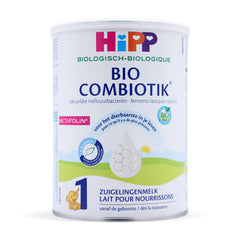

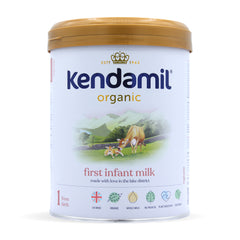
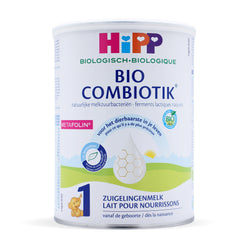
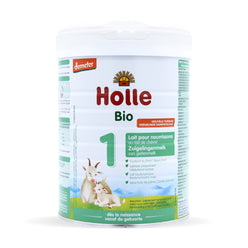
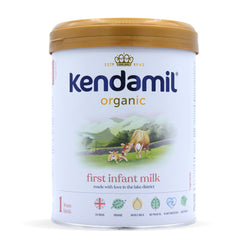






Bryce K -
Learning the proper breastfeeding position made a remarkable difference for both my wife and our baby, improving latch, comfort, and overall feeding confidence. With better positioning, our baby fed more calmly and efficiently while my wife experienced less strain and a more positive bonding experience.
Noemi B -
November 24, 2025
When I was struggling with latch issues, I wish I had known about the laid-back position sooner—it made breastfeeding so much less stressful.
Adrianna D -
October 30, 2025
Breastfeeding my baby has been an amazing and emotional experience, filled with closeness and love. However, I’m now looking for gentle and effective ways to start weaning and gradually transition away from breastfeeding while keeping it comfortable for both of us.